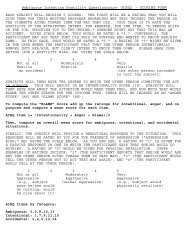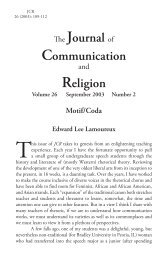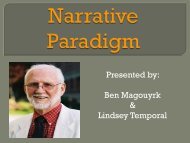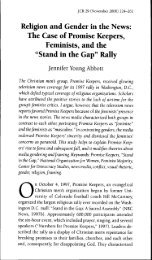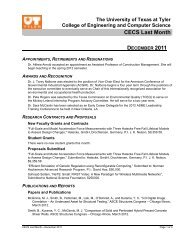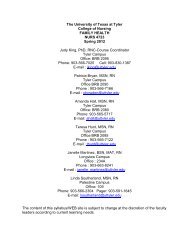"History, Analysis and Performance Considerations of Gerald Finzi's ...
"History, Analysis and Performance Considerations of Gerald Finzi's ...
"History, Analysis and Performance Considerations of Gerald Finzi's ...
You also want an ePaper? Increase the reach of your titles
YUMPU automatically turns print PDFs into web optimized ePapers that Google loves.
23unique contour <strong>of</strong> these lines, a mix <strong>of</strong> linear <strong>and</strong> angular motion, is reminiscent <strong>of</strong> the Crossimagery identified in the corresponding measures <strong>of</strong> the prelude (see Figure 3). Banfield suggestshis own metaphor for the interlude, that <strong>of</strong> portraying activity in the chancel. 50 Among the otherpurposes these measures satisfy is introducing the dramatic melodic gesture <strong>of</strong> the downwardleap <strong>of</strong> a fifth, answered by an upward octave at measure 33, an echo <strong>of</strong> prelude measure 6, <strong>and</strong>in anticipation <strong>of</strong> similarly wide leaps on “Jesu, Master” following in measures 39-40 (see Figure11). Finally, the winding contrapuntal lines redirect the anthem into fresh harmonic ground,closing with the familiar rising major third as the harmonic link between A <strong>and</strong> F major inmeasures 38-39. In this cadential figure we find another Finzi signature—his use <strong>of</strong> mediantrelationships <strong>and</strong>/or common tones for key transitions (see Figure 12).A reduction <strong>of</strong> the interlude shows the familiar stepwise movement away from <strong>and</strong>returning to the key center (see Figure 13). Consistent with the reductions, a structural outline <strong>of</strong>Section A in its entirety indicates one primary thematic element (see Table 1). Together with thelong-sustained E harmony, <strong>and</strong> the use <strong>of</strong> dramatic text repetition, this section is thereby unlikeany other structural division to follow. In particular, the remaining large sections <strong>of</strong> the anthemare typically characterized by the use <strong>of</strong> successive multiple themes <strong>and</strong> numerous keytransitions.50 Banfield, 328.



